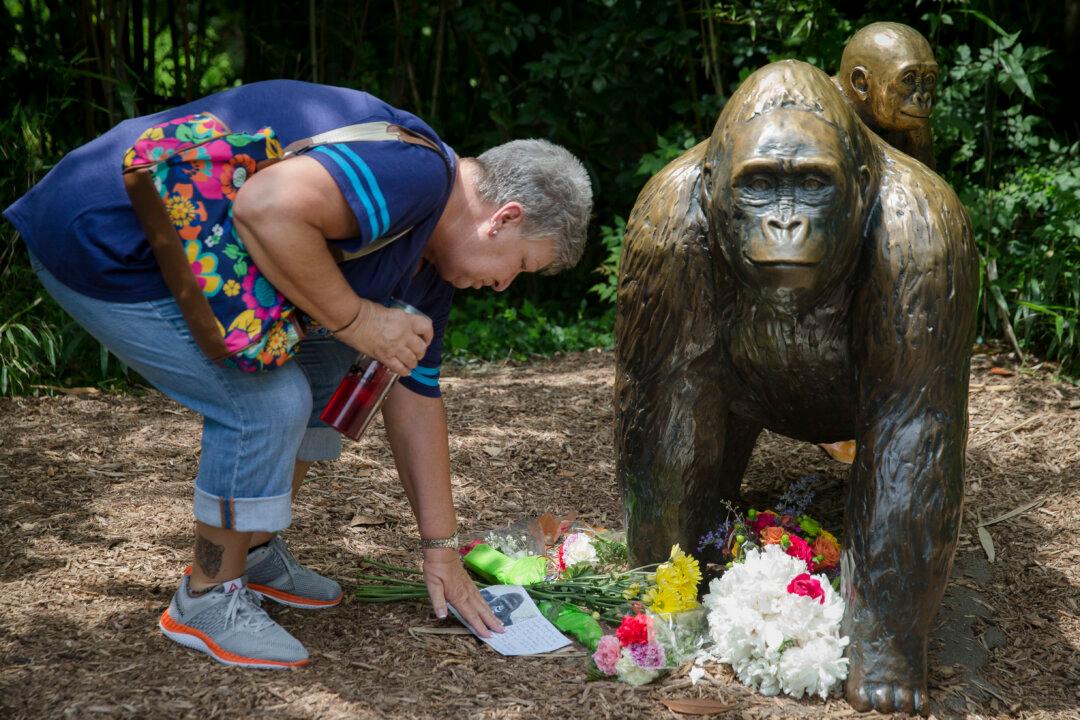Harambe the gorilla is dead, but his bloodline won’t be.
The silverback was shot to death by Cincinnati zookeepers after a child had fallen into the enclosure, and he has been mourned by the general public and the zookeepers who raised him alike.
After Harambe died, his body was retrieved by the Cincinnati zoo’s Center for Conservation and Research of Endangered Wildlife, where his sperm was extracted and preserved.
The center’s assisted reproductive program includes research into artificial insemination.
“There’s a future,” Cincinnati Zoo director Thane Maynard said, Cincinnati.com reports. “It’s not the end of his gene pool.”
Harambe had died at 17, before reaching breeding age. The zoo had hoped to use him in the breeding program set up by the Species Survival Program management group, which aims at keeping the gorilla gene poll diverse for health reasons.
Western lowland gorillas are a a critically endangered species, and zookeepers want to keep the captive population viable if they’re released into the wild.
The Cincinnati Zoo, meanwhile, is an experienced breeder of gorilla, and in August, gorilla Elle became the 50th gorilla born at the zoo.
A number of scientists have contacted the zoo for possible uses of Harambe’s remains for other types of research, such as tissue storage.





